

How Salamanders Regenerate Lost Limbs. Salamanders can regrow entire limbs and regenerate parts of major organs, an ability that relies on their immune systems, research now shows.
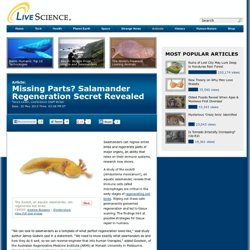
6 Future Mods for Our Minds and Bodies. Injection-Mold Custom Organs Fab@Home machine.
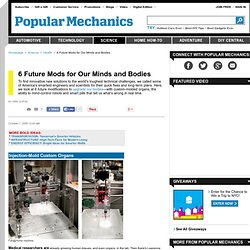
Medical researchers are already growing human tissues, and even organs, in the lab. Then there's Lawrence Bonassar. The assistant professor of biomedical engineering at Cornell University is producing custom body parts using Fab@Home, a 3D lithography platform developed at Cornell. (Its inventors won a 2007 Popular Mechanics Breakthrough Award.) Breed Super-Rice to Feed the World Genetic engineer Pamela Ronald, photographed for Popular Mechanics on April 14, 2009. Pamela Ronald is a genetic engineer with little patience for debates over "frankenfoods. " Researchers now plan to develop rice strains that need less moisture and fertilizer, can fight off destructive microbes and can thrive in saltier conditions.
Growing Organs in the Lab. Why transplant an organ when you can grow yourself a new one?
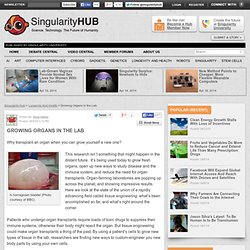
A homegrown bladder (Photo courtesy of BBC) This research isn’t something that might happen in the distant future. It’s being used today to grow fresh organs, open up new ways to study disease and the immune system, and reduce the need for organ transplants. Newt healing factors unaffected by age and injury. Gouge out my eyes, and I would be permanently blind.
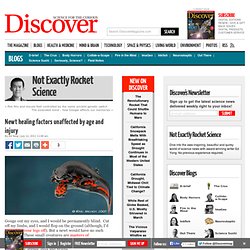
Cut off my limbs, and I would flop on the ground (although, I’d try to bite your legs off). But a newt would have no such problems. These small creatures are masters of regeneration. If they lose a limb, they grow new ones in a few months. They can regenerate parts of their tails, jaws, ears, hearts, spines, eyes and brains. Now, Goro Eguchi has shown that a newt’s healing powers don’t diminish with age. We’ve known about the abilities of newts and other salamanders for over 200 years, thanks initially to Lazzarro Spallanzini, an Italian biologist and Catholic priest.
The salamanders could repeatedly regrow their limbs, but eventually, abnormalities crept in. But Eguchi thinks that these experiments, while historically important, were also flawed. To truly test the extent of these animals’ powers, Eguchi set up a 16-year-long experiment. Skin and umbilical cord cells turned directly into nerve cells. Until recently, the production of pluripotent "multipurpose" stem cells from skin cells was considered to be the ultimate new development.
In the meantime, it has become possible to directly convert cells of the body into one another -- without the time-consuming detour via a pluripotent intermediate stage. However, this method has so far been rather inefficient. Vitamin C boosts reprogramming of adult cells into stem cells. Famous for its antioxidant properties and role in tissue repair, vitamin C is touted as beneficial for illnesses ranging from the common cold to cancer and perhaps even for slowing the aging process.
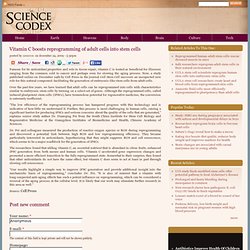
Now, a study published online on December 24th by Cell Press in the journal Cell Stem Cell uncovers an unexpected new role for this natural compound: facilitating the generation of embryonic-like stem cells from adult cells. Over the past few years, we have learned that adult cells can be reprogrammed into cells with characteristics similar to embryonic stem cells by turning on a select set of genes. Although the reprogrammed cells, called induced pluripotent stem cells (iPSCs), have tremendous potential for regenerative medicine, the conversion is extremely inefficient. Regenerative Medicine. Written by experts in stem cell research, this report describes advances made since 2001 and outlines the expectations for future developments.
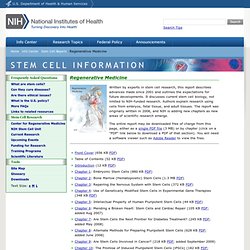
It discusses current stem cell biology, not limited to NIH-funded research. Authors explain research using cells from embryos, fetal tissue, and adult tissues. The report was originally written in 2006, and NIH is adding new chapters as new areas of scientific research emerge. The entire report may be downloaded free of charge from this page, either as a single PDF file (3 MB) or by chapter (click on a "PDF" link below to download a PDF of that section).
You will need a software viewer such as Adobe Reader to view the files. We will 'grow' all organs to order in future, says pioneering surgeon - Health News - Health & Families. Professor Paolo Macchiarini, who pioneered the first transplant of a whole organ grown from a patient's own cells four years ago, said the technology of regenerative medicine had advanced to the point where it was possible to contemplate transplants with no human donors, no problems of rejection and no need for lifelong treatment with immuno-suppressive drugs.
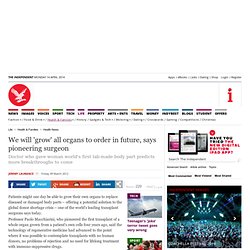
The new technique involves the creation of an artificial "scaffold" – which could in future be made from animal organs that have been stripped of their living cells – into which the patients own stem cells are inserted. The cells then grow to create a fully functioning organ ready for transplant. "Such an approach has already been used successfully for the repair and reconstruction of complex tissues such as the trachea, oesophagus, and skeletal muscle in animal models and human beings," Professor Macchiarini said. Watch "How to Build a Human Heart. It is almost time for humanity to start building humans.

Home — Regenerative Medicine Jobs (RMJ)
Alan Russell on regenerating our bodies. Metformin kills and radiosensitizes cancer cells and preferentially kills cancer stem cells : Scientific Reports. Metformin is cytotoxic to cancer cells Metformin reduced the clonogenic survival of FSaII mouse fibrosarcoma cells and MCF-7 human breast cancer cells in dose and time-dependent manner as shown in Fig. 1.
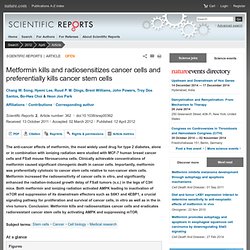
In FSaII cells (Fig. 1A), incubation with 1.0 mM metformin for 1 h reduced the clonogenic survival of cells to 65.1%, and incubation for 24 h or 48 h reduced the survival to 49.3% and 28.7%, respectively. Incubation of MCF-7 cells with 1.0 mM metformin for 24 or 48 h decreased the cell survival to 81.7% and 71.0%, respectively (Fig. 1B).